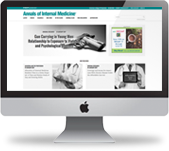Postdischarge care: When a phone call is not enough
Postdischarge contact with patients had no significant effect on returns to the ED or the hospital, one study found.
The importance of follow-up after discharge has become a truism of hospital medicine. But a recent review found that the most common form of these contacts might not be accomplishing its primary goal.
Reviewers looked for studies that tested the effects of postdischarge contact with patients on two outcomes: ED visits or hospital readmissions within 30 days, and patient satisfaction. They found 13 studies that met their criteria, all but one of which were telephone-based. Ten of the interventions consisted of a single phone call in the week after discharge.

The review, which was published by Annals of Internal Medicine on Jan. 14, concluded that the interventions had no significant effect on returns to the ED or the hospital. The authors recommended that hospitals “reconsider the utility” of systems in which every discharged patient receives a phone call.
The review's lead author, Joel Boggan, MD, MPH, a hospitalist at the Durham Veterans Affairs (VA) Medical Center and an associate professor of medicine at Duke University in Durham, N.C., recently provided more insight on the review's findings.
Q: What motivated this review?
A: The VA Office of Primary Care reached out with this question around the effectiveness of postdischarge contacts on the outcomes of readmissions and health care use. The VA is considering how to standardize this process and so they wanted some input on whether there were best-case examples out there for us to model.
Q: What did you think of the results?
A: We were a little surprised at what was in the literature. We were hoping to find examples of newer technologies or newer modalities. But when we did our literature search, what met our criteria were really examples using telephone outreach and one example using video conferencing.
There are other things that health systems are using—text messaging, other forms of asynchronous communication, patient portals, etc. But the VA was interested in synchronous contact, where the patient and whoever was reaching out to them could have a conversation in the moment.
We were less surprised that the single point of contact or, in some of the studies, two or three calls isn't affecting these really large and difficult outcomes.
Q: Do you think other types of postdischarge contact might have more effect?
A: It is important to note that we were really looking at contact happening in the first week, not bridging too far beyond the second week. The reason we chose those time points was to align with the transitional care management billing codes, where the intention is that a patient leaving the hospital is connected to their primary care clinic within 14 days and has some contact in between. There are examples out there where a lot of communication happens longer after [discharge]—30 or 60 days. We didn't look at those specifically.
Q: Why do you think the phone calls didn't reduce readmissions?
A: The discharge process has changed over time. A lot of the efforts happen while the patient's still in the hospital. Even in something like the [Agency for Healthcare Research and Quality] toolkit, there are multiple steps, but all but one of them happen before the patient leaves. If you think about that whole process, having this one smaller step, isolated alone, probably isn't making much difference.
Q: What might work better?
A: The things that we hope to see in the future are multimodal strategies. There are things a phone call or video conference are great for. If you're doing a medication review or a medication reconciliation, you need someone who's really working in real time with a patient or a caregiver, going through their medications, making sure that what's on the paperwork matches what they have at home. But there are other things, like symptom monitoring—their pain, their shortness of breath—that you could potentially measure, follow, and react to asynchronously based on a trend. Pairing those things may actually provide fuller support for a patient in this vulnerable period after they leave the hospital.
Q: Were the interventions that you reviewed targeting medications and symptoms?
A: We tried to figure out, from what was studied, what functions the intervention was attempting to serve. We identified three core functions. The first was around medication review, the second was around symptom monitoring, and the third was around coordination of social and clinical services. You could imagine in the future other patient-reported outcomes. There could be some that look specifically at social vulnerabilities.
Q: What are the implications of these findings for existing systems of follow-up contact? Do they still have any benefit?
A: There probably are benefits that we did not investigate through the study. The literature is most robust around medication safety and medication adverse effects—that certainly is one area of potential benefit. There probably are benefits around timeliness and attendance at follow-up appointments. And there probably are some benefits to making sure that patients have access to other services—home health services, transportation, food. If the outreach is focused around those functions, there probably are benefits that we didn't investigate in the study and that are meaningful both to patients and to clinicians.
Q: So the calls aren't necessarily a waste of effort just because they don't reduce readmissions?
A: Right. Because readmissions are so costly, there are the penalties related to them, and so certainly I understand why those became a focused outcome of a lot of this work, but there really are other pieces of this that probably do have some benefit.
Q: What else would you want hospitalists to take away from this review?
A: The first is continued recognition that moving the needle on readmissions is really, really hard. Secondly, I think that the standard of care of what we do around discharge really has improved over the past years and decades.
Third, there probably are some really interesting opportunities to partner with clinicians in the outpatient setting for populations that we identify as high risk. Those could be related to specific readmission risks that are identified at an institutional local level, related to certain disease states, [or] related to certain social vulnerabilities. There are opportunities to fine-tune these processes so that we can get even more intensive interventions to these high-risk groups of patients as we identify them.
Q: What might these interventions look like?
A: A multimodal bundle of interventions where there is some synchronous contact with a patient and family, but [also] there are a lot of opportunities to build other functions asynchronously, through text messaging, even potentially chatbots, and elements like telehealth and symptom monitoring. We can really build a framework around a patient during this vulnerable period.




